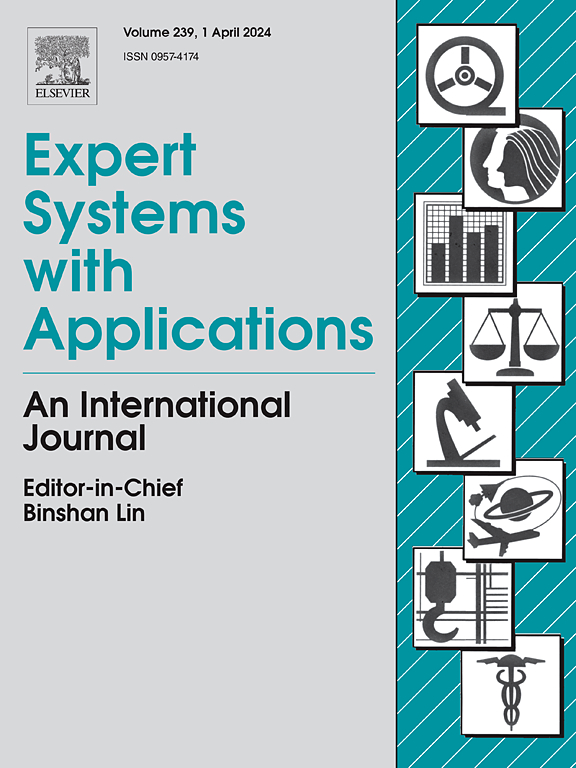卷积模糊模块堆叠深度残差系统在分类问题中的应用
IF 7.5
1区 计算机科学
Q1 COMPUTER SCIENCE, ARTIFICIAL INTELLIGENCE
引用次数: 0
摘要
近年来,人们对各种数据驱动方法进行了大量的研究,但如何建立具有良好可解释性、高精度和良好泛化能力的深度模糊模型仍然是一个巨大的挑战,特别是在面对复杂、高维、强非线性的分类问题时。结合卷积神经网络和模糊推理方法的优点,提出了一种基于卷积模糊模块叠加的深度残差系统(CFM-DRS),该系统在四种机制下均取得了优异的性能。首先,本文设计了一种新的卷积模糊模块(CFM),该模块可以通过卷积运算综合提取数据集的特征,然后通过相应的子模糊推理模块(s-FIM)对数据集进行分类。它也是其他三个机制的基础。此外,每个s-FIM采用模糊c均值算法来识别特征的分布模式。它不仅以可解释的方式建立了特征和输出值之间的推理关系,而且还缓解了规则爆炸的问题。此外,为了减少异常值和冗余信息对整体性能的影响,本研究采用正则化优化策略对参数进行惩罚,并根据s-FIMs的重要贡献对其进行修剪。此外,在深度框架中利用残差逼近机制有利于学习新的特征,进一步提高模型的精度。提出的CFM-DRS算法应用于若干分类问题。在不同基准和真实数据集上的大量实验表明,与几种最先进的方法相比,所提出的CFM-DRS具有更好的分类性能。本文章由计算机程序翻译,如有差异,请以英文原文为准。
Convolutional fuzzy modules stacked deep residual system with application to classification problems
Recent years have witnessed tremendous efforts devoted to investigating various data-driven methods, but how to build deep fuzzy models with good interpretability, high-precision, and well generalization ability remains a huge challenge, especially when facing complex, high-dimensional, and strong-nonlinear characteristics in the classification problems. Integrating both the advantages of convolutional neural networks and fuzzy inference method, this paper proposes a deep residual system by stacking the convolutional fuzzy modules (CFM-DRS), which achieves excellent performance with four mechanisms. Firstly, this study designs a new convolutional fuzzy module (CFM), which can comprehensively extract features from datasets with the convolutional operations, and then classify them through the corresponding sub-fuzzy-inference-modules (s-FIM). It is also the foundation of the other three mechanisms. Furthermore, each s-FIM employs the fuzzy C-means algorithm to identify the distribution patterns of features. It not only establishes the inference relationship between the features and output values in an interpretable manner, but also alleviates the problem of rule explosion. In addition, to reduce the impact of outliers and redundancy information on the overall performance, this study adopts the regularization optimization strategy to punish the parameters and prunes the s-FIMs based on their significant contributions. Besides, the utilization of the residual approximation mechanism in the deep framework is beneficial for learning new features and further improving the model’s accuracy. The proposed CFM-DRS is applied to several classification problems. Extensive experiments on different benchmark and real-world datasets demonstrate that the proposed CFM-DRS has a better classification performance compared to several state-of-the-art methods.
求助全文
通过发布文献求助,成功后即可免费获取论文全文。
去求助
来源期刊

Expert Systems with Applications
工程技术-工程:电子与电气
CiteScore
13.80
自引率
10.60%
发文量
2045
审稿时长
8.7 months
期刊介绍:
Expert Systems With Applications is an international journal dedicated to the exchange of information on expert and intelligent systems used globally in industry, government, and universities. The journal emphasizes original papers covering the design, development, testing, implementation, and management of these systems, offering practical guidelines. It spans various sectors such as finance, engineering, marketing, law, project management, information management, medicine, and more. The journal also welcomes papers on multi-agent systems, knowledge management, neural networks, knowledge discovery, data mining, and other related areas, excluding applications to military/defense systems.
 求助内容:
求助内容: 应助结果提醒方式:
应助结果提醒方式:


